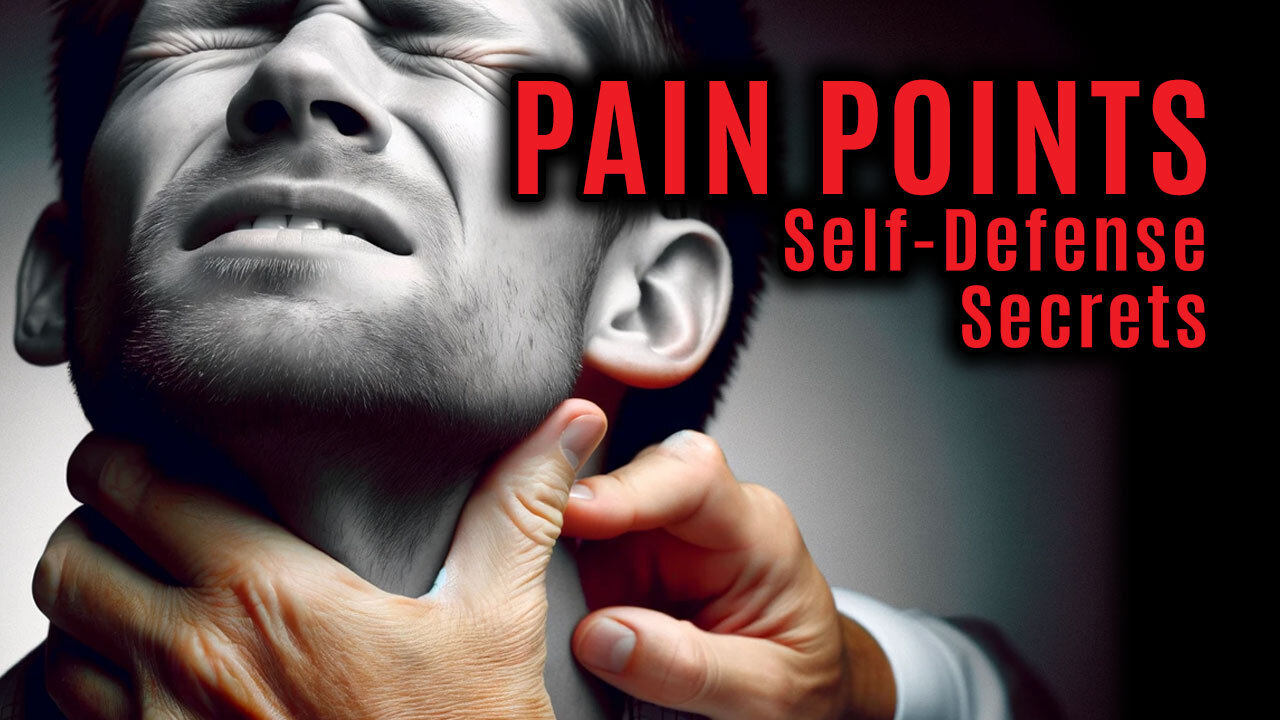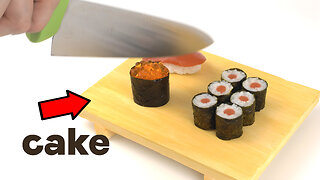Premium Only Content

3 Excruciating Pressure Points to Humiliate an Attacker
Get Your FREE TRS Striker pocket knife Here
►https://fightfast.com/YT_Striker
Pressure points, also known as vital points or vulnerable areas, are specific areas on the human body that can be targeted to inflict pain, discomfort, or disable an attacker temporarily in self-defense situations. It's important to note that using pressure points in self-defense should be used with caution and as a last resort. Always prioritize non-violent conflict resolution and, if possible, seek to escape or de-escalate the situation.
Here are some common pressure points that can be targeted for self-defense:
Eyes: Gouging or poking an attacker's eyes can cause extreme pain and temporary blindness. This is a highly effective and often instinctual response to a threat.
Nose: Striking the nose with a palm-heel strike, elbow, or knee can cause significant pain and potentially incapacitate an attacker momentarily.
Throat: A strike to the throat can cause choking, difficulty breathing, and intense pain. Be very cautious when targeting this area, as it can be dangerous.
Temples: Striking the temples on the sides of the head can disorient an attacker and potentially cause a knockout.
Jaw: A powerful punch or upward strike to the jaw can cause pain and disorientation.
Ears: A hard slap or strike to the ears can disrupt an attacker's balance and disorient them temporarily.
Neck: Targeting the sides or back of the neck can cause pain and discomfort, especially if you hit sensitive nerve areas.
Collarbone: Striking or pressing on the collarbone can be painful and may impair an attacker's ability to use their arm.
Solar Plexus: A strike to the solar plexus (the soft area just below the sternum) can cause an attacker to lose their breath and double over in pain.
Groin: A kick or knee strike to the groin can incapacitate an attacker, particularly if you're dealing with a male assailant.
Kidneys: The lower back area just above the hips can be targeted with a hard strike to cause significant pain.
Pressure Points on Arms and Legs: There are various pressure points on the arms and legs that, when struck or manipulated, can cause pain and temporary disability. These are commonly used in martial arts and self-defense techniques.
It's crucial to remember that the effectiveness of pressure point techniques can vary based on factors such as an attacker's pain tolerance, adrenaline levels, and body size. Also, relying solely on pressure points may not be sufficient in all self-defense situations. Therefore, it's essential to combine pressure point techniques with other self-defense skills, such as striking, blocking, and evasion, as well as de-escalation and escape strategies. Additionally, self-defense training and knowledge of local laws and regulations are crucial for using these techniques responsibly.
If you liked this fight fast video and want to learn more simplified self defense subscribe to our channel by clicking here: https://www.youtube.com/fightfastvideos?sub_confirmation=1
Want to boost your self defense skills quickly?
Fight Fast Advanced Fundamentals playlist:
https://www.youtube.com/playlist?list=PLwn5YXM1AxtpDvKTxNHZS4EoFIn1eMnrm
For over 30 years Threat Response Solutions and Fightfast.com have been dedicated to teaching average people quick learn self defense techniques that actually work in a real life street fight. Our instruction works against larger, stronger, more aggressive opponents. To do this we’ve sought out the most experienced combat experts in the world, guys whose lives depend on their techniques actually working. Our instructors include former US and Israeli Special Forces soldiers, cage fighters, notorious street fighters, bar-room bouncers, and grizzled beat cops. If you want to learn from the best most experienced fighters in the world you are in the right place.
FightFast Blog
► http://www.fightfast.com/blog
Facebook
► http://facebook.com/fightfast
Instagram @TRSsurvival
► https://instagram.com/trssurvival
#SelfDefense #TRSsurvival #FightFast
-
 1:39:44
1:39:44
HELMET FIRE
12 hours agoDEADROP IS BACK!
137K8 -
 10:03
10:03
Tundra Tactical
14 hours ago $14.84 earnedBrandon Herrera Vies Bid for ATF Director!
87.7K15 -
 22:01
22:01
DeVory Darkins
1 day ago $35.30 earnedHakeem Jeffries SHUTS DOWN The View as Matt Gaetz Speaks out
77.1K126 -
 2:02:54
2:02:54
Mally_Mouse
13 hours agoLet's Play!! - Spicy Saturday
57.2K2 -
 1:33:06
1:33:06
Slightly Offensive
14 hours ago $29.98 earnedAre You Ready for What's Coming Next? | Just Chatting Chill Stream
74.5K41 -
 32:10
32:10
MYLUNCHBREAK CHANNEL PAGE
1 day agoThe Gate of All Nations
146K63 -
 13:07
13:07
Sideserf Cake Studio
18 hours ago $3.82 earnedIS THIS THE MOST REALISTIC SUSHI CAKE EVER MADE?
63K4 -
 21:08
21:08
Clownfish TV
1 day agoElon Musk Tells WotC to BURN IN HELL for Erasing Gary Gygax from DnD!
50.6K16 -
 48:22
48:22
PMG
14 hours ago $11.29 earned"IRS Whistleblowers Speak Out on Biden Family with Mel K In-Studio"
40.7K25 -
 2:59
2:59
BIG NEM
16 hours agoLost in the Wrong Hood: Who Do I Check In With?
30.8K3